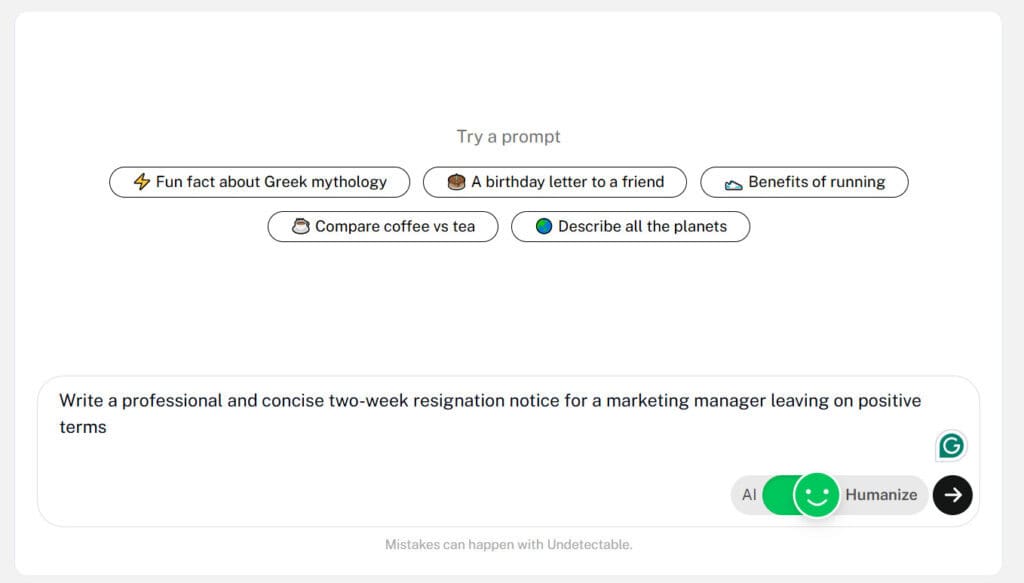“Use the Force, Luke.”
“Just keep swimming.”
“Say hello to my little friend!
“May the odds be ever in your favor.”
These are just a few of the best and most memorable quotes from the past few decades of cinema.
But lines like these aren’t just iconic pop culture lines because they are unique.
Statements like these are easily ingrained in our brains because they cut straight to the point.
This is what imperative sentences are. They’re brief, vivid, and emotionally charged. Short and punchy lines are easy to process and remember.
From Yoda’s wisdom to Dory’s persistence, imperative sentences pack a powerful punch in just a few words.
We encounter these action-driving sentences countless times every day. “Click here.” “Add to cart.” “Subscribe now.”
The digital world runs on imperatives. They’re the backbone of instructions, the framework of recipes, and the secret weapon of effective communication.
But what makes these sentences so powerful? How do they differ from other sentence types?
And how can you master them to strengthen your own writing?
Let’s dive into the world of imperative sentences, the commanding force behind clear, direct communication.
What Is an Imperative Sentence?
An imperative sentence gives a command, makes a request, or offers advice. It tells someone to do something.
Unlike declarative sentence types that state facts or ask questions, imperative sentences drive action.
The defining characteristic? Imperative sentences use a verb at the beginning of the sentence with an implied subject (you).


Never Worry About AI Detecting Your Texts Again. Undetectable AI Can Help You:
- Make your AI assisted writing appear human-like.
- Bypass all major AI detection tools with just one click.
- Use AI safely and confidently in school and work.
The actual word “you” rarely appears in the sentence itself.
Take these examples:
- “Close the door.” (Not “You close the door.”)
- “Please pass the salt.” (Not “You please pass the salt.”)
- “Turn right at the light.” (Not “You turn right at the light.”)
Every imperative sentence serves a clear purpose: to get someone to do something. Imperative sentences are the workhorses of instructional writing, from cooking recipes to assembly manuals.
They create the framework for clear directions with minimal words.
Imperative sentences stick because they are not just commands but emotional, memorable, and socially reinforcing phrases that sync with our brains.
They act as verbal shortcuts.
Why say, “I would like you to send me that report by Friday,” when “Send me that report by Friday” accomplishes the same goal in half the words?
How Imperative Sentences Differ From Other Sentence Types
English has four main sentence types, each with distinct functions:
- Declarative sentences make statements or declare facts.
- The meeting starts at noon. (States a fact)
- Interrogative sentences ask questions.
- What time does the meeting start? (Seeks information)
- Exclamatory sentences express strong emotions.
- What an amazing presentation that was! (Expresses enthusiasm)
- Imperative sentences give commands or requests.
- Be on time for the meeting. (Directs action)
The key difference? Imperative sentences focus on actions that should happen, while other sentence types describe, question, or exclaim.
Notice how imperative sentences typically:
- Begin with a verb (the implied “you” is understood)
- End with either a period or exclamation mark
- Can be as short as one word (“Go!”)
- Lack a visible subject in the sentence structure
This streamlined construction makes imperative sentences perfect for situations requiring clear, concise instructions.
Types of Imperative Sentences (With Examples)
Imperative sentences come in various forms, each serving a specific communication need. Let’s explore the five main types.
1. Command Sentences (Direct Orders)
Command imperatives deliver straightforward instructions that expect immediate action.
They typically end with a period but may use an exclamation mark for urgency or emphasis.
Examples:
- “Stand up straight.”
- “Turn off the lights when you leave.”
- “Submit your report by Friday.”
- “Call me immediately!”
- “Stop talking.”
Command sentences appear frequently in professional settings, military contexts, emergency situations, and parental guidance.
They prioritize clarity over politeness when direct action matters most.
2. Request Sentences (Polite Imperatives)
Request imperatives soften commands with polite modifiers like “please” or “kindly.” They maintain the imperative structure while adding courtesy.
Examples:
- “Please take a seat.”
- “Kindly respond to the email at your earliest convenience.”
- “Would you mind closing the window?”
- “If you could sign here, please.”
- “Consider arriving a few minutes early.”
These sentences walk the line between direction and politeness.
They acknowledge the reader’s autonomy while still guiding them toward a specific action.
3. Instructional Sentences (Directions & Guidelines)
Instructional imperatives provide step-by-step guidance.
They excel in tutorials, recipes, manuals, and any situation requiring sequential actions.
Examples:
- “Preheat the oven to 350 degrees.”
- “Insert tab A into slot B.”
- “Download the attachment and open it in Excel.”
- “Mix the ingredients until smooth.”
- “Follow the blue trail markers to reach the summit.”
These sentences create the backbone of how-to content.
They break complex processes into manageable steps, guiding readers through unfamiliar territory with confidence.
4. Warning & Advice Sentences
Warning imperatives alert readers to potential dangers or consequences. They aim to protect and guide rather than simply direct.
Examples:
- “Don’t touch the hot surface.”
- “Never mix these chemicals.”
- “Save your work frequently to avoid losing data.”
- “Watch out for slippery floors.”
- “Remember to back up important files.”
These sentences often prevent problems before they occur.
They highlight risks and offer protective guidance that helps readers navigate potentially challenging situations.
5. Invitation Sentences (Encouragement & Offers)
Invitation imperatives encourage participation or acceptance.
They maintain the imperative structure while creating a welcoming tone.
Examples:
- “Join us for dinner tonight.”
- “Feel free to ask questions.”
- “Take all the time you need.”
- “Help yourself to refreshments.”
- “Come in and make yourself comfortable.”
These sentences extend opportunities rather than demands.
They use the imperative form to create warmth and openness, making readers feel welcome rather than directed.
Imperative Sentences vs. Other Sentence Types
The distinction between imperative sentences and other types becomes clearer when we transform the same basic idea across different sentence forms.
Consider how this concept changes across sentence types:
Declarative: “The door is closed.” (Simply states a fact about the door’s condition)
Interrogative: “Is the door closed?” (Asks about the door’s condition)
Exclamatory: “How firmly that door is closed!” (Expresses surprise or emphasis about the door’s condition)
Imperative: “Close the door.” (Directs someone to change the door’s condition)
The imperative version is the only one that directly triggers action. It doesn’t describe or question reality—it attempts to change it.
Another key difference lies in subject placement. While other sentence types typically lead with subjects (the door is closed), imperative sentences begin with verbs (close the door), creating immediate momentum toward action.
How to Form Imperative Sentences Correctly

Creating effective imperative sentences involves understanding their unique structure and knowing when to adjust punctuation for different effects.
This contrasts with adverbs, which modify verbs but don’t dictate direct action.
The Structure of an Imperative Sentence
The basic formula for an imperative sentence follows this pattern:
Verb + Object + Additional Details (if needed)
For example:
- “Send” (verb) + “the email” (object) + “before noon” (additional detail)
- “Clean” (verb) + “your room” (object)
- “Walk” (verb) + “slowly” (additional detail)
Notice what’s missing? The subject. In imperative sentences, “you” is almost always implied rather than stated.
This creates the sentence’s direct, action-oriented tone.
You can modify this basic structure by:
- Adding “please” or other politeness markers
- “Please submit your assignment by Friday.”
- Including “do” for emphasis
- “Do remember to lock the door.”
- Using negative forms with “don’t” or “never”
- “Don’t forget your passport.”
- “Never leave food unattended while cooking.”
- Adding “let’s” to create inclusive commands
- “Let’s review the proposal together.”
The flexibility of imperative structures allows for commands ranging from abrupt (“Stop!”) to elaborate (“Please consider reviewing the attached document at your earliest convenience.”).
When to Use a Period vs. an Exclamation Mark
The punctuation you choose significantly impacts how readers perceive your imperative sentence:
Period (.)
- Creates a neutral, matter-of-fact tone
- Best for everyday instructions and requests
- Appropriate for professional or formal settings
Examples: “Take the next exit.” “Please submit your timesheet.”
Exclamation Mark (!)
- Adds urgency, enthusiasm, or emotional intensity
- Effective for warnings or celebrating achievements
- Can appear demanding in professional contexts
Examples: “Look out!” “Great job, keep it up!”
Most imperative sentences work perfectly well with periods.
Reserve exclamation marks for situations truly warranting emphasis or emotion.
Common Mistakes With Imperative Sentences & How to Fix Them
Even experienced writers sometimes struggle with imperative sentences, especially when understanding the difference between declarative and imperative structures.
Here are the most common pitfalls and how to avoid them:
1. Including an unnecessary “you”
- Incorrect: “You close the window.”
- Correct: “Close the window.”
The “you” is already implied in imperative sentences. Adding it explicitly transforms your imperative into a declarative sentence.
2. Confusing imperatives with future tense
- Incorrect: “You will submit the report tomorrow.”
- Correct: “Submit the report tomorrow.”
The first example predicts a future action rather than commanding it.
3. Adding question marks to polite requests
- Incorrect: “Please take a seat?”
- Correct: “Please take a seat.”
Even polite imperatives are still commands, not questions.
They require periods or exclamation marks.
4. Creating comma splices with imperatives
- Incorrect: “Review the document, let me know your thoughts.”
- Correct: “Review the document and let me know your thoughts.”
- Also correct: “Review the document. Let me know your thoughts.”
Each imperative deserves proper separation through conjunctions or full stops.
5. Overusing exclamation marks
- Problematic: “Send the file! Include all attachments! Confirm receipt!”
- Better: “Send the file with all attachments. Confirm receipt.”
Too many exclamation marks create an aggressive tone and diminishes impact.
6. Failing to vary imperative intensity
- Problematic: “Complete the survey. Submit your receipts. Update your profile.”
- Better: “Please complete the survey at your convenience. Submit your receipts by Friday. When you have a moment, update your profile information.”
Adding modifiers and timeframes creates a more nuanced, respectful tone.
How AI Can Help Improve Command & Request Writing
Crafting the perfect imperative sentence isn’t always easy.
The line between authoritative and authoritarian can be surprisingly thin.
This is where AI writing tools can offer valuable assistance.

Our Ask AI tool provides an excellent resource for students working on language assignments related to sentence types.
When struggling with how to phrase a particular command or request, students can ask specific questions like:
- “How can I make this command sound more polite?”
- “Is this imperative sentence structured correctly?”
- “What’s a stronger verb to use in this instruction?”
The tool offers immediate feedback while helping students understand the principles behind effective imperative construction.

For broader questions about imperative sentences, Our AI Chat serves as a helpful grammar companion.
You might ask:
- “What’s the difference between a command and a request imperative?”
- “When should I use exclamation marks with imperatives?”
- “How do imperative sentences work in formal business writing?”
These AI tools help writers navigate the nuances of imperative sentences, ensuring commands come across with the intended tone and impact.
Tell, Don’t Ask
Imperative sentences form the crux of clear communication.
They drive action, provide guidance, and create opportunities for engagement.
From the gentle nudge of “Please consider our proposal” to the urgent command of “Call 911!”, imperatives shape our daily interactions in countless ways.
The best imperative sentences combine clarity with an appropriate tone.
They respect the reader while clearly communicating expectations.
Whether you’re writing instructions, crafting marketing calls-to-action, or simply asking someone to pass the salt, understanding the structure and impact of imperative sentences enhances your communication effectiveness.
Leverage Undetectable AI’s writing tools to refine your imperative sentences, ensuring they are persuasive, grammatically sound, and tailored to your audience.
Try them today and elevate your writing!
